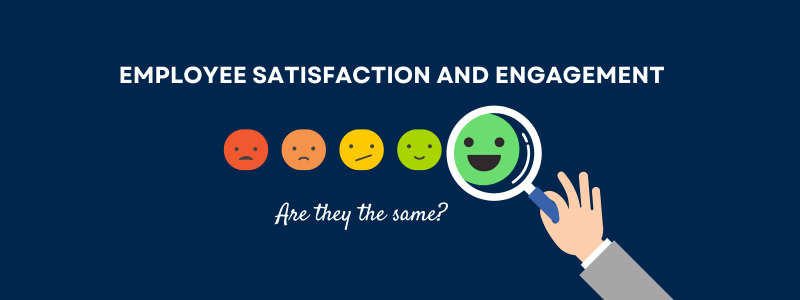Understanding Employee Satisfaction and Engagement: Are They the Same?
- 16/04/2024
- Posted by: Ali Ayaz
- Category: Recruitment

In the world of modern business, particularly in employer branding and HR, the terms “employee satisfaction” and “employee engagement” are often used interchangeably. However, understanding the nuances between these two concepts is critical for businesses aiming to foster a supportive and productive workplace environment.
Employee Satisfaction: Contentment at Work
Employee satisfaction refers to how content employees feel with their job roles, work conditions, compensation, and benefits. It is a measure of whether an employee’s expectations and needs are met by their employer. Satisfaction is typically evaluated through surveys and feedback mechanisms which ask employees about their feelings towards various aspects of their job and workplace. High satisfaction levels generally indicate that employees are happy with the static aspects of their job, such as pay, work environment, and job security.
Employee Engagement: Commitment and Motivation
In contrast, employee engagement goes deeper, reflecting an employee’s emotional commitment and motivation towards their job and the company. An engaged employee does not just work for a paycheck or the next promotion but works on behalf of the organization’s goals. Engaged employees are often more proactive, resilient, and aligned with the company’s mission. They are seen as advocates for the company, driven by a deeper connection to their work that extends beyond basic satisfaction.
The Crucial Differences
Scope: Satisfaction is generally more about comfort, safety, and fair compensation. It is transactional. Engagement, however, is about passion and effort. It is transformational.
Outcome: Satisfied employees might do what is required and generally don’t go beyond. Engaged employees strive to exceed expectations because they feel a sense of purpose and ownership.
Impact: High satisfaction can lead to employee retention, but not necessarily high performance. High engagement affects performance, innovation, and directly impacts organizational success.
From Insights to Action
Drawing from our experience with over 250 employer branding projects, we’ve seen firsthand that companies focusing solely on employee satisfaction often miss out on fostering true engagement. Engagement requires continuous dialogue, meaningful recognition, and growth opportunities, unlike satisfaction, which can often be met with periodic adjustments in policies and benefits.
Implementation in Employer Brand Strategy
To attract and retain top talent, businesses must craft an Employer Value Proposition (EVP) that emphasizes not only the satisfaction elements but also, and perhaps more critically, the engagement aspects. Communicating potential growth paths, impact opportunities, and the company’s vision in job postings and interviews can shift the focus from mere satisfaction to deeper engagement.
Understanding and leveraging the differences between employee satisfaction and engagement can transform HR practices. It enables a shift from maintaining a satisfactory workplace to creating a dynamic environment where employees are truly engaged and aligned with the company’s broader goals.
By aiming not just to satisfy but to engage, businesses position themselves to benefit from increased productivity, innovation, and loyalty, which are instrumental in driving long-term success.
To learn more, you can join a free week session of Employer Brand Academy certificate courses here or you can download my free ebook creating an authentic employer brand here.
Leave a Reply
You must be logged in to post a comment.
